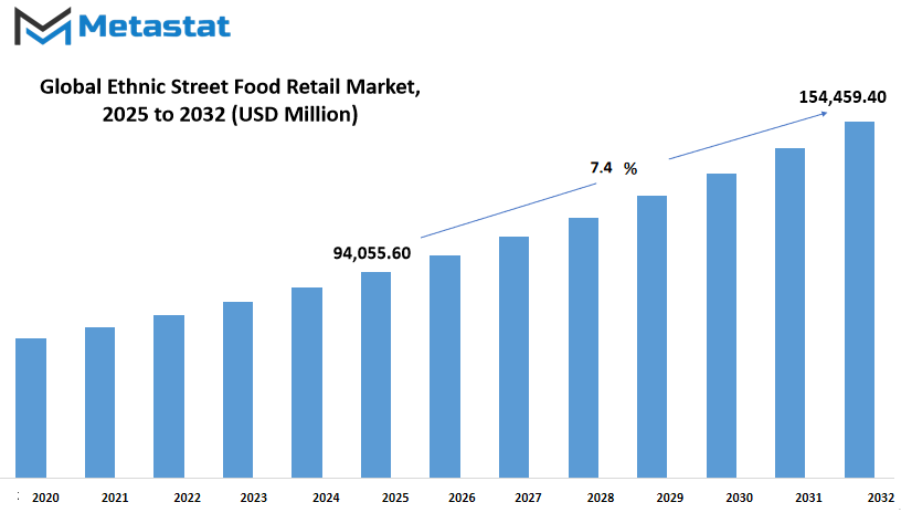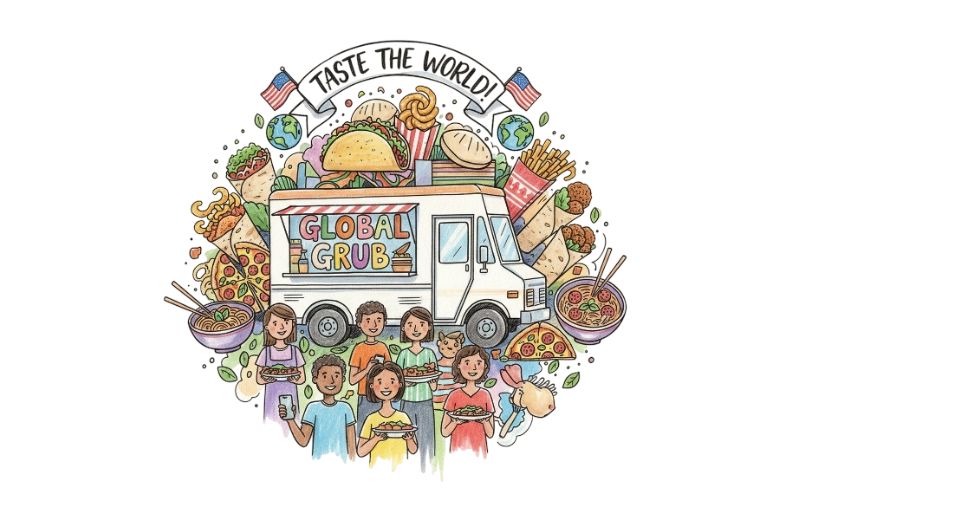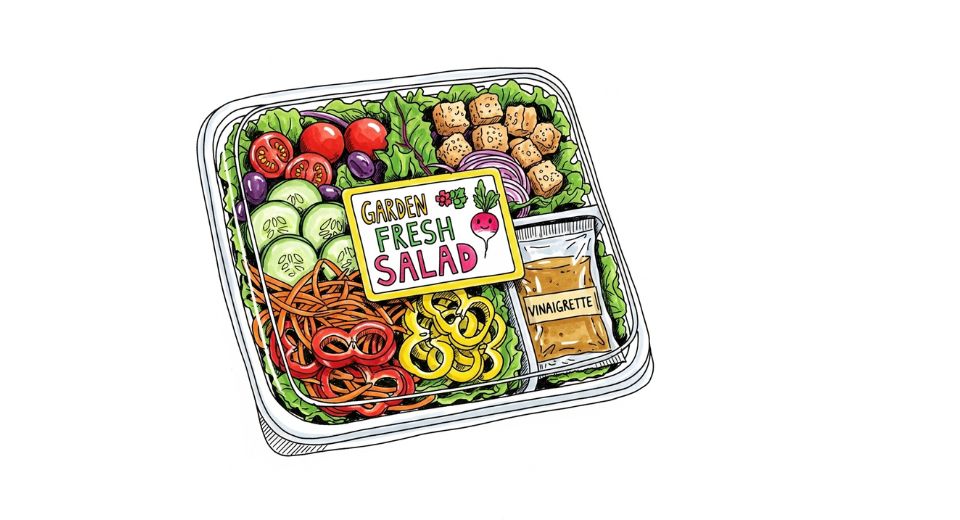MARKET OVERVIEW
The global ethnic street food retail market will remain an interesting crossroads of food culture, consumer trends, and contemporary retailing practice. This market will not be merely characterized by the retailing of food, but how old-fashioned dishes from one place or another will get a foothold in organized retailing environments, both brick-and-mortar and virtual. Street food, which has its origins in outdoor markets and neighborhood street vendors, will become reborn as retailers evolve local practices for mass audiences who will pursue convenience without sacrificing authenticity. Street food has never been anything other than about accessibility, taste, and identity.
What will differentiate the retail half of this market is how it will convert those values into scalable business models. Rather than confining these meals to sidewalk throngs or street carts, they will be packaged, branded, and sold in stores and e-commerce sites. Retailers won't merely sell food; they will sell experience that will convey place and heritage. A consumer who buys a pre-packaged bao bun or samosa will be interacting with more than a meal—it will be a tale of cultural survival and adaptation that will cross boundaries. One of the most powerful elements of this business will be the fact that it connects tradition with contemporary consumer requirements. Retail chains, independent stores, and specialty outlets will increase their product portfolios to include products that have been only seen on local street corners.
This transformation will not only make the products accessible to consumers far away from their original cultures but also allow producers to present authenticity in terms that will connect worldwide. The packaging, branding, and even the choice of ingredients will play a central role in shaping how these foods will be perceived and enjoyed. Technology will also have an impact on how this sector will conduct business. From grocery sites online to food delivery applications, ethnic street food in stores will reach beyond geographical bounds. Consumers in cities thousands of miles from where the food is produced will be able to dine on prepared meals or even frozen meals that will maintain flavor and freshness. Availability will foster curiosity and enable more consumers to taste cultural foods that otherwise would go unknown to them. Concurrently, the industry will not be solely about mass distribution. Local vendors who will partner with retail partners will keep their distinctive recipes and traditions, achieving a harmony of authenticity and mass. This pairing will enable the market to remain culture-based while still having access to new populations. The intersection of small-scale beginnings and large-scale expansion will characterize the identity of this industry. Ultimately, the international ethnic street food retail market will go on to develop as a platform that will bridge heritage with innovation.
Its future will not just project the flavor that defines certain communities but also showcase how retail will serve as a conduit to carry those experiences across continents. What formerly existed on street corners will get a grander stage, and in the process, it will determine how cultural food traditions will be eaten, remembered, and celebrated in the future.
Global ethnic street food retail market is estimated to reach $154,459.40 Million by 2032; growing at a CAGR of 7.4% from 2025 to 2032.

GROWTH FACTORS
The global ethnic street food retail market is gaining strong attention worldwide as demand for authentic and diverse culinary experiences continues to rise. Food has always been a way of connecting cultures, and in modern times, the desire to explore international flavors is stronger than ever. People are not just looking for meals but also seeking experiences that reflect the taste and traditions of different communities. This growing interest will continue to shape the market in the coming years, especially as more consumers embrace foods that feel genuine and original rather than overly standardized.
One of the strongest forces driving this market is urbanization. As cities expand and lifestyles become busier, convenient food options are becoming more important. Quick, flavorful, and portable meals meet the needs of individuals who have less time for traditional dining. The global ethnic street food retail market fits into this shift perfectly by offering food that is both satisfying and easy to consume on the go. This trend will only grow as more people move to urban centers, where access to such food options is highly valued.
Still, the path forward is not without challenges. Regulatory policies, hygiene standards, and compliance issues often create barriers for vendors who operate in this market. Street food may carry a cultural charm, but safety and sanitation are critical for consumer trust. Strict oversight will be required to balance authenticity with health regulations. In addition, the supply chain presents another hurdle. Sourcing authentic ingredients can be difficult, particularly when recipes require spices or raw materials from specific regions. Without reliable access to these, maintaining originality becomes harder, and this could affect consumer satisfaction.
Despite these concerns, the global market holds promising opportunities. The expansion of global food delivery platforms is opening new ways to connect with customers. Technology is bridging gaps, making it possible for local vendors to reach international audiences through online ordering and delivery systems. Furthermore, the rise of fusion food concepts, where traditional recipes are combined with modern flavors, is likely to create fresh excitement and attract younger consumers eager for innovation. These developments will allow the market to adapt and thrive in a competitive food industry landscape.
In the future, the global ethnic street food retail market will not only continue to represent cultural diversity but also reflect global trends in convenience, technology, and innovation. By balancing authenticity with modern expectations, the market will remain a strong force in shaping how food is enjoyed across different parts of the world.
MARKET SEGMENTATION
By Application
The global ethnic street food retail market is gaining attention as demand for diverse and flavorful food options continues to expand across regions. Street food, once confined to local neighborhoods and cultural events, is now being embraced on a larger commercial scale through retail channels. Consumers are drawn to the authenticity, affordability, and convenience offered by ethnic street food, and this interest is fueling growth opportunities for retailers and manufacturers. The variety of offerings ensures that the market has a strong base to build on, and future trends point toward broader acceptance of ethnic flavors in mainstream retail settings.
By application, the global ethnic street food retail market is divided into Ready-to-Eat Meals, Snacks & Light Bites, Beverages & Drinks, Frozen/Packaged Ethnic Street Food, and Others. Ready-to-Eat Meals are expected to remain a major driver, as urban lifestyles and time pressures encourage purchases of quick meal solutions without sacrificing taste or authenticity. Retailers will likely expand ready-to-eat lines by incorporating regional specialties that replicate the street food experience in a convenient format.
Snacks & Light Bites represent another growing area, as consumers increasingly prefer smaller portions that can be enjoyed on the go. Retailers will introduce snack options inspired by flavors from Asia, Latin America, the Middle East, and Africa, catering to curiosity about global cuisine. These snack products will attract younger buyers who actively seek out bold tastes and unique combinations.
The Beverages & Drinks segment within the global ethnic street food retail market is also positioned for growth. Traditional drinks, such as spiced teas, fruit-based beverages, and regional herbal concoctions, are finding their way into retail outlets. Consumers will continue to explore these drinks as refreshing alternatives to conventional soft drinks and juices. Innovation in packaging and preservation techniques will allow for longer shelf life, making it easier for retailers to stock ethnic drinks on a wide scale.
Frozen and packaged ethnic street food will also see greater expansion, as improved freezing technology preserves flavors while ensuring safety and convenience. Packaged dumplings, samosas, tacos, and kebabs will become popular options for home consumption, giving consumers a way to recreate street food experiences at any time. The "Others" category will provide space for evolving ideas, such as plant-based ethnic recipes or fusion-style offerings that blend cultural influences.
The global ethnic street food retail market will continue to progress as innovation, convenience, and consumer demand intersect. By embracing authenticity while adapting to modern retail needs, the market will secure a stronger global presence and ensure that ethnic street food remains accessible to a wider audience.
By End User
The global ethnic street food retail market is gaining attention as demand for diverse and flavorful food options continues to expand across regions. Street food, once confined to local neighborhoods and cultural events, is now being embraced on a larger commercial scale through retail channels. Consumers are drawn to the authenticity, affordability, and convenience offered by ethnic street food, and this interest is fueling growth opportunities for retailers and manufacturers. The variety of offerings ensures that the market has a strong base to build on, and future trends point toward broader acceptance of ethnic flavors in mainstream retail settings.
By application, the global ethnic street food retail market is divided into Ready-to-Eat Meals, Snacks & Light Bites, Beverages & Drinks, Frozen/Packaged Ethnic Street Food, and Others. Ready-to-Eat Meals are expected to remain a major driver, as urban lifestyles and time pressures encourage purchases of quick meal solutions without sacrificing taste or authenticity. Retailers will likely expand ready-to-eat lines by incorporating regional specialties that replicate the street food experience in a convenient format.
Snacks & Light Bites represent another growing area, as consumers increasingly prefer smaller portions that can be enjoyed on the go. Retailers will introduce snack options inspired by flavors from Asia, Latin America, the Middle East, and Africa, catering to curiosity about global cuisine. These snack products will attract younger buyers who actively seek out bold tastes and unique combinations.
The segment of Beverages & Drinks within the global ethnic street food retail market is also positioned for growth. Traditional drinks, such as spiced teas, fruit-based beverages, and regional herbal concoctions, are finding their way into retail outlets. Consumers will continue to explore these drinks as refreshing alternatives to conventional soft drinks and juices. Innovation in packaging and preservation techniques will allow for longer shelf life, making it easier for retailers to stock ethnic drinks on a wide scale.
Frozen and packaged ethnic street food will also see greater expansion, as improved freezing technology preserves flavors while ensuring safety and convenience. Packaged dumplings, samosas, tacos, and kebabs will become popular options for home consumption, giving consumers a way to recreate street food experiences at any time. The "Others" category will provide space for evolving ideas, such as plant-based ethnic recipes or fusion-style offerings that blend cultural influences.
The global ethnic street food retail market will continue to progress as innovation, convenience, and consumer demand intersect. By embracing authenticity while adapting to modern retail needs, the market will secure a stronger global presence and ensure that ethnic street food remains accessible to a wider audience.
By Sales Channel
The global ethnic street food retail market is moving toward a future shaped by consumer demand for unique flavors, cultural experiences, and convenient access. Street food has always attracted attention for its authenticity, affordability, and variety, and the global stage is now embracing it as a structured retail category. Growing urbanization, changing lifestyles, and an increasing interest in food exploration will drive continued growth. With more people seeking diverse dining options, ethnic street food is no longer limited to local markets but is now recognized as a global trend that connects cultures through taste.
By sales channel, the global market is expanding in several directions. Street food stalls and kiosks will remain a major attraction because of their close connection to tradition and affordability. These outlets will continue to thrive in areas with high foot traffic, offering quick meals that reflect local flavors. Food trucks will expand further by blending mobility with variety, often experimenting with fusion dishes and flexible service. Quick service restaurants (QSRs) and takeaways are expected to grow as they bring the feel of street food into a more organized setting while ensuring speed and consistency. Online food delivery platforms will play an even larger role, bridging the gap between physical presence and digital convenience, allowing ethnic street food to reach homes and offices without geographical limits. Other channels, such as pop-up events and specialty stores, will also contribute to growth by creating unique experiences that highlight different food cultures.
The future of the global ethnic street food retail market will also be shaped by technology and sustainability. Digital ordering systems, contactless payments, and data-driven personalization will make the experience faster and more tailored to individual preferences. At the same time, increasing awareness about health and sustainability will encourage vendors to use eco-friendly packaging, locally sourced ingredients, and healthier cooking methods. As demand for vegetarian, vegan, and gluten-free options rises, street food vendors and retailers will adjust their offerings to meet these expectations while preserving authentic taste.
Global expansion will continue as ethnic street food brands gain recognition beyond their origins. Cities across the world will see more variety, from Asian noodles and Middle Eastern wraps to Latin American snacks and African specialties. Tourism will support this growth, with travelers eager to experience authentic tastes that reflect local culture. As a result, the global ethnic street food retail market will become an even stronger bridge between cultures, giving communities access to flavors that represent both tradition and innovation.
|
Forecast Period |
2025-2032 |
|
Market Size in 2025 |
$94,055.60 million |
|
Market Size by 2032 |
$154,459.40 Million |
|
Growth Rate from 2025 to 2032 |
7.4% |
|
Base Year |
2024 |
|
Regions Covered |
North America, Europe, Asia-Pacific Green, South America, Middle East & Africa |
REGIONAL ANALYSIS
The global ethnic street food retail market is becoming an area of strong interest as cultural diversity continues to influence consumer habits worldwide. Street food, once viewed mainly as a local tradition, is now gaining recognition as a vital driver of retail growth. This trend is supported by rising urbanization, increasing travel, and a growing demand for unique and authentic flavors that connect people with cultural experiences. Modern retail platforms, food chains, and online services are working to bring ethnic street food closer to mainstream consumers, shaping how people shop and eat in the future.
Based on geography, the global ethnic street food retail market is divided into several regions, each playing a distinct role in market expansion. North America, including the U.S., Canada, and Mexico, shows growing interest as immigrant communities introduce traditional street foods and mainstream consumers adopt them as part of regular diets. Europe, with major markets such as the UK, Germany, France, and Italy, reflects a strong mix of cultural influences, with diverse food festivals and specialty retail outlets fueling demand. The Asia-Pacific region, segmented into India, China, Japan, South Korea, and others, stands as the most dynamic part of the market, with a long history of vibrant street food culture now being reshaped into modern retail channels. South America, represented by Brazil, Argentina, and neighboring countries, is witnessing increased popularity of both local street food and international ethnic offerings. The Middle East & Africa, including GCC Countries, Egypt, and South Africa, is expanding due to a mix of tourism, population growth, and growing retail infrastructure.
Future growth of the global market will be shaped by technology and consumer expectations. Digital platforms will allow retailers to connect ethnic food vendors with broader audiences, while advanced logistics will ensure that authentic ingredients are available worldwide. The market will also benefit from health-conscious trends, as retailers work to offer cleaner, fresher, and sustainable versions of traditional street food. Globalization will continue to break down barriers, making food that was once regional now widely available across continents.
The global ethnic street food retail market has the potential to redefine how food is consumed in daily life. With cultural exchange, retail innovation, and digital growth, this sector will not only preserve traditional flavors but also create new opportunities for global connection through food.

COMPETITIVE PLAYERS
The global ethnic street food retail market is gaining wider recognition as consumer tastes continue to expand beyond traditional dining experiences. A growing appetite for unique flavors, affordable meals, and cultural diversity is driving interest in this sector. Street food, once seen as a casual or niche option, is now moving into mainstream retail spaces, food courts, and delivery platforms. The attraction comes from the authenticity and freshness of offerings that create a sense of connection with different cultures. This shift highlights how food is not just nourishment but also a reflection of shared traditions and stories.
Future growth in the global ethnic street food retail market will be influenced by technology, consumer lifestyle changes, and urban development. Digital platforms will make ordering easier, while innovations in mobile applications and food delivery services will give customers access to a wider range of options. As more people live in cities, quick and flavorful meals that reflect authentic culinary traditions will continue to gain importance. The move toward healthier food choices will also shape how vendors present menus, focusing on fresh ingredients, plant-based alternatives, and transparent sourcing.
Key players operating in the global market include Uncle Gussy’s, The Halal Guys, Banh Mi Boys, Wok to Walk, Mamak, Kebab Turki Baba Rafi, Churros Garcia, El Jefe’s Tacos, Mr. Churros, Maoz Vegetarian, Tuk Tuk Cha, Go Falafel, Zaatar W Zeit, Food Truck Collective, Kati Roll Company, and Gözleme King. These businesses highlight the diversity of this sector, offering dishes that range from Mediterranean falafel to Asian noodles, Mexican tacos, and Middle Eastern kebabs. Each brand represents a story rooted in tradition but adapted for modern retail and fast-paced urban environments. The variety of flavors is what will keep drawing people to this market, making it both dynamic and competitive.
Looking ahead, the global ethnic street food retail market will benefit from cultural exchange, tourism growth, and a rising interest in authentic dining experiences. Social media exposure will play a strong role, with visually appealing food becoming a driver for popularity. Sustainability efforts will further shape the market, as consumers will increasingly prefer vendors who reduce waste, use eco-friendly packaging, and maintain ethical sourcing. Innovation will remain essential, as businesses will experiment with fusion dishes, technology-driven service models, and global expansion strategies. With all these developments, this market will not only grow in value but also become an important bridge connecting diverse cultures through food.
Ethnic Street Food Retail Market Key Segments:
By Type
- Chinese
- Japanese
- Mexican
- Italian
- Others
By Application
- Ready-to-Eat Meals
- Snacks & Light Bites
- Beverages & Drinks
- Frozen/Packaged Ethnic Street Food
- Others
By End User
- Individual Consumers
- Families/Households
- Working Professionals
- Tourists/Travelers
- Students
By Sales Channel
- Street Food Stalls & Kiosks
- Food Trucks
- Quick Service Restaurants (QSRs) & Takeaways
- Online Food Delivery Platforms
- Others
Key Global Ethnic Street Food Retail Industry Players
- Uncle Gussy’s
- The Halal Guys
- Banh Mi Boys
- Wok to Walk
- Mamak
- Kebab Turki Baba Rafi
- Churros Garcia
- El Jefe’s Tacos
- Mr. Churros
- Maoz Vegetarian
- Tuk Tuk Cha
- Go Falafel
- Zaatar W Zeit
- Food Truck Collective
- Kati Roll Company
- Gözleme King
WHAT REPORT PROVIDES
- Full in-depth analysis of the parent Industry
- Important changes in market and its dynamics
- Segmentation details of the market
- Former, on-going, and projected market analysis in terms of volume and value
- Assessment of niche industry developments
- Market share analysis
- Key strategies of major players
- Emerging segments and regional growth potential








 US: +1 3023308252
US: +1 3023308252






